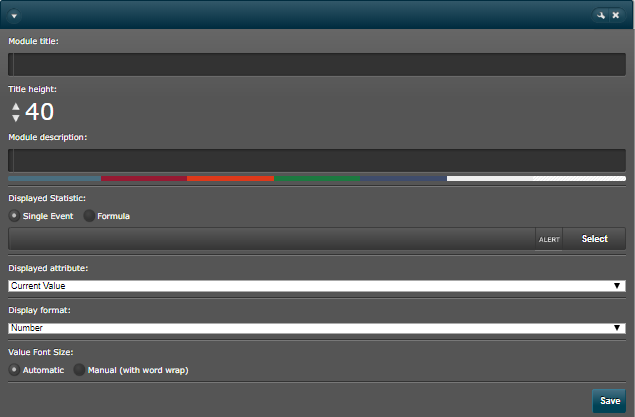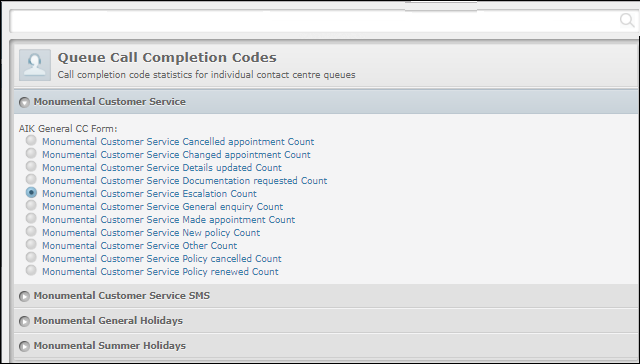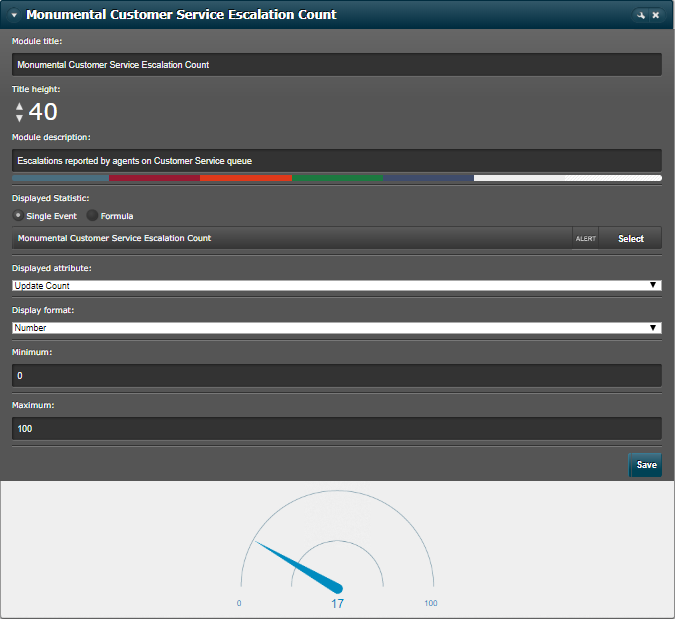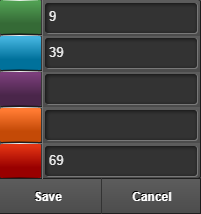Configure a Real-Time Gauge Module
This is a procedural topic for administrators describing how to configure a real-time Gauge Module.
This topic also covers the following related tasks:
Change an Event's Measurement Type
Change an Event's Unit of Measurement
Configure the Gauge Needle to Change Colour on Reaching Chosen Thresholds
Prerequisites
- You have logged in to storm with your user log in credentials and then launched the VIEW application. See Log in to storm and Launch VIEW.
- You are familiar with the VIEW Dashboard Interface.
- You have created a real-time dashboard. See Create a Dashboard for Real-Time Statistics.
- You know how to place real-time modules from the Module palette. See Place Real-Time Modules on a Dashboard.
Basic Configuration
-
From the Module palette, drag and drop a Gauge module onto an empty part of the dashboard. Gauge Module

-
Click the
 button in the module's title bar to display the configuration options.
button in the module's title bar to display the configuration options. -
Click Select to add the real-time event.

-
In the dialog displaying a categorised list of entities configured in your contact centre, select the desired event and then click OK at the bottom of the dialog.

Note: at the bottom of each category of events, click the Show More link to show more entities as necessary. To quickly search for an entity or an event, type its name in the filter field at the top of the dialog.
For a complete list and descriptions of all events available in this dialog, see Real-Time Events Selector.
In the configuration panel, the chart updates with data for the selected real-time event immediately:

-
Optionally, enter a meaningful description for the gauge. This will appear in a tooltip when a mouse cursor hovers over the module's title bar. The module title takes its name from the selected event but edit this if required.
-
If desired, change the height and colour of the module's title bar using the title height control and by clicking a colour on the colour bar.
-
If desired, edit the minimum and maximum values shown on the gauge.
-
Click the module's Save button.
Related Tasks
|
Task |
Procedure |
||||||||||||
|
From the Displayed Attribute options list, select another type of statistic to display for the event. It is up to you to ensure that the selected type is meaningful for the event.
|
|||||||||||||
|
From the Display Format options list, select another format. It is up to you to ensure that the selected format is meaningful for the event.
|
|||||||||||||
|
Configure the Gauge Needle to Change Colour on Reaching Chosen Thresholds |
|
Explore Further
